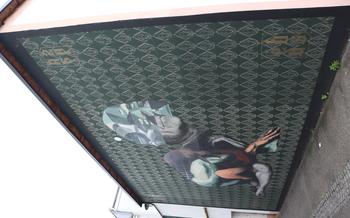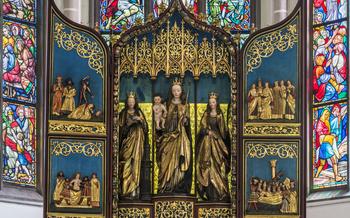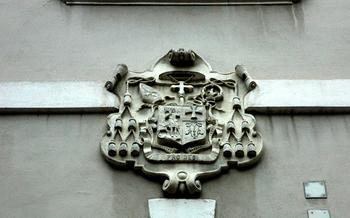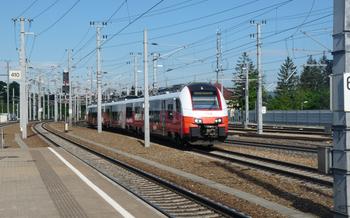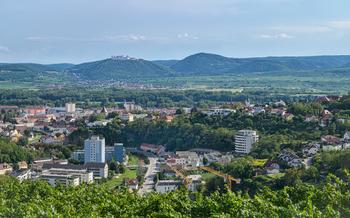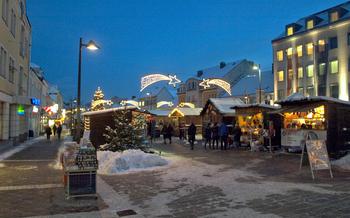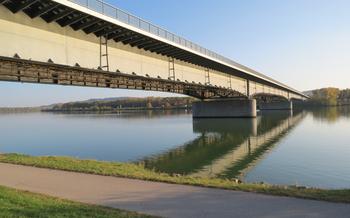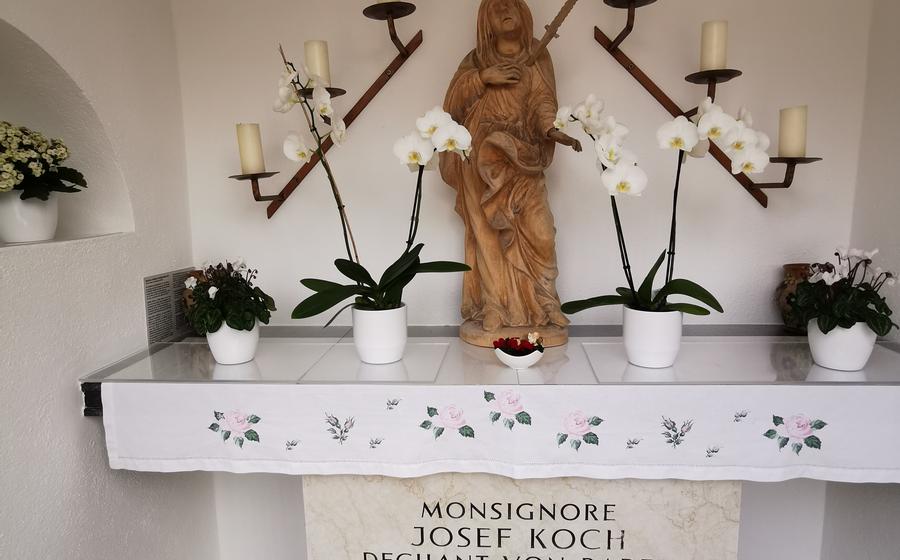
Stift Melk Abbey
- Stift Melk Abbey: A Timeless Masterpiece
- Navigating the Abbey Grounds: A Journey Through History
- Unveiling the Abbey Museum: A Treasure Trove of History
- Marveling at the Library: A Haven of Knowledge
- Divine Delights: The Abbey's Culinary Creations
- Following the Footsteps of Monks: A Spiritual Retreat
- Unveiling the Abbey's Hidden Corners: Off-the-Beaten-Path Gems
- Discovering the Abbey's Musical Heritage: A Symphony of Sacred Sounds
- Exploring the Enchanting Town of Melk: A Tapestry of History and Charm
- Cruising Along the Majestic Danube: A Scenic Adventure
- Conquering the Trails: Hiking and Biking amidst Natural Splendor
- Indulging in Local Flavors: A Culinary Journey
- Unveiling the Wachau Valley's Cultural Gems: A Tapestry of Art and History
- Insider Tip: Capturing the Abbey's Essence
Stift Melk Abbey: A Timeless Masterpiece
Deep within the heart of Austria's picturesque Wachau Valley, nestled amidst rolling hills and vineyards, lies the magnificent Stift Melk Abbey. Founded in 1089 by Benedictine monks, this architectural masterpiece has stood as a beacon of spirituality, culture, and architectural prowess for over nine centuries.
With its awe-inspiring Baroque façade, intricate carvings, and soaring spires, Stift Melk Abbey is a testament to the artistic and spiritual fervor that characterized the Baroque era. Its grand presence has earned it a well-deserved place among UNESCO World Heritage Sites, recognizing its exceptional cultural and historical significance.
Beyond its architectural splendor, Stift Melk Abbey holds a profound reputation as a center of learning, spirituality, and cultural exchange. Its hallowed halls have witnessed countless generations of monks devoting their lives to scholarship, prayer, and the preservation of knowledge.
As you embark on a journey through this architectural and spiritual gem, prepare to be captivated by its timeless beauty, rich history, and the profound legacy it continues to uphold.
Navigating the Abbey Grounds: A Journey Through History
The journey through the abbey grounds begins with the grand entrance, an architectural masterpiece that immediately captivates visitors with its ornate details and intricate carvings. From here, the abbey's courtyards unfold, each showcasing a unique architectural style that reflects the abbey's rich history. Baroque influences are evident in the elegant arcades and delicate statues that adorn these courtyards, creating a harmonious blend of architectural elements.
At the heart of the abbey lies the Abbey Church, a Baroque masterpiece that stands as a testament to the abbey's spiritual significance. The church's interior is adorned with intricate frescoes, opulent marble, and gleaming gold accents, creating an awe-inspiring atmosphere of grandeur and devotion. The high altar, with its intricate carvings and radiant golden glow, serves as a focal point of the church, inviting visitors to contemplate the divine.
Another architectural highlight of the abbey is the Imperial Staircase, a symbol of grandeur and opulence. This magnificent staircase, with its sweeping curves and ornate balustrades, leads visitors to the upper floors of the abbey, providing breathtaking views of the surrounding grounds. The staircase's grandeur reflects the abbey's historical significance as a place of power and influence, where royalty and high-ranking officials were often welcomed.
Unveiling the Abbey Museum: A Treasure Trove of History
Within the hallowed walls of Stift Melk Abbey, the Abbey Museum stands as a testament to centuries of rich history and cultural heritage. Step into this treasure trove of knowledge, where ancient manuscripts whisper tales of a bygone era, and priceless artwork adorns the walls, narrating the abbey's spiritual journey.
Ancient Manuscripts: A Window to the Past
The museum houses a remarkable collection of ancient manuscripts, meticulously preserved and cataloged, offering a glimpse into the intellectual and spiritual pursuits of the Benedictine monks. These handwritten texts, adorned with intricate illuminations and calligraphy, transport visitors back to a time when knowledge was carefully transcribed and guarded.
Artwork and Paintings: Divine Narratives Unfold
The abbey's walls come alive with an array of paintings and artwork, each narrating a chapter in the abbey's history or depicting religious narratives with exquisite detail. From serene depictions of saints and biblical scenes to vibrant representations of miracles and parables, these artworks serve as visual sermons, conveying spiritual messages to the faithful.
Historic Artifacts: Glimpses into Monastic Life
Interspersed among the manuscripts and artwork are historic artifacts that provide tangible connections to the abbey's past. From ornate chalices and reliquaries to monastic vestments and everyday objects, these artifacts offer a glimpse into the daily lives of the monks and the functioning of the abbey as a self-sufficient community.
Interactive Displays: An Immersive Experience
The Abbey Museum embraces modern technology to enhance the visitor experience. Interactive displays, multimedia presentations, and touchscreens bring history to life, allowing visitors to engage with the exhibits on a deeper level. Virtual tours, augmented reality experiences, and historical reenactments further immerse visitors in the abbey's rich narrative.
Marveling at the Library: A Haven of Knowledge
The Stift Melk Abbey Library is a treasure trove of knowledge and literary wonders, inviting visitors to delve into the depths of human intellect. Its architectural elegance, Baroque ornamentation, and vast collection of ancient texts and manuscripts create an atmosphere of awe and inspiration.
Crafted in the Baroque style, the library stuns visitors with its intricate details, opulent frescoes, and soaring ceilings. The shelves, adorned with intricate carvings and gilding, house a staggering collection of over 100,000 volumes, encompassing a wide range of subjects, from theology and philosophy to history, science, and literature.
Thematic rooms within the library showcase diverse collections, each dedicated to a specific field of knowledge. One room houses a collection of rare Bibles, including beautifully illuminated manuscripts dating back centuries. Another room is dedicated to the works of Austrian authors, providing a glimpse into the country's rich literary heritage.
The abbey's library is not merely a repository of books but a testament to the enduring power of knowledge and the pursuit of intellectual enlightenment. Its collection serves as a valuable resource for scholars, researchers, and anyone seeking to expand their understanding of the world.
Divine Delights: The Abbey's Culinary Creations
The Benedictine monks of Stift Melk have a long-standing tradition of brewing, and their abbey brewery is one of the oldest in Austria. The abbey's kitchen is also renowned for its culinary expertise, producing delectable pastries, handcrafted treats, and other delicacies. The abbey's restaurant, located within the abbey grounds, offers a unique dining experience, where visitors can savor traditional Austrian cuisine and monastic specialties while enjoying the tranquil atmosphere of the abbey.
Following the Footsteps of Monks: A Spiritual Retreat
Beyond its architectural and artistic splendor, Stift Melk Abbey holds a deep spiritual significance, inviting visitors to embark on a journey of reflection and inner peace. The abbey's long-standing tradition as a place of pilgrimage and retreat offers a unique opportunity to experience the monastic way of life and delve into the realm of spirituality.
Visitors can join guided tours led by knowledgeable monks, gaining insights into the abbey's history, customs, and rituals. These tours provide a glimpse into the daily lives of the monks, their devotion to prayer, and their commitment to serving the community.
For those seeking a deeper spiritual connection, the abbey offers spiritual workshops and retreats, allowing visitors to immerse themselves in contemplation and meditation. These programs provide a serene environment for self-reflection, guided by the wisdom and teachings of the monks.
Moreover, the abbey's commitment to interfaith dialogue fosters a spirit of understanding and cooperation among people of different faiths. Visitors can participate in interfaith gatherings, workshops, and discussions, promoting tolerance, respect, and a shared pursuit of spiritual growth.
Whether seeking solace, inspiration, or a deeper understanding of spirituality, Stift Melk Abbey offers a sanctuary for those seeking to connect with their inner selves and explore the profound dimensions of human existence.
Unveiling the Abbey's Hidden Corners: Off-the-Beaten-Path Gems
Beyond the grand halls and ornate chambers, Stift Melk Abbey holds a treasure trove of hidden corners and secret spaces that reveal the abbey's rich history and spiritual essence. Embark on a journey of discovery as you uncover these hidden gems, each offering a unique perspective on the abbey's past.
Venture into the abbey's subterranean realm, where ancient crypts and burial chambers lie hidden. These hallowed spaces, once the resting places of monks and benefactors, offer a glimpse into the abbey's mortality and the cycle of life. Intricate carvings and epitaphs adorn the walls, narrating the lives of those who once walked the abbey's halls.
Ascend to the abbey's towers and turrets, where breathtaking panoramic views await. From these elevated vantage points, the surrounding landscape unfolds in all its glory. Gaze upon the tranquil waters of the Danube, the rolling hills of the Wachau Valley, and the distant spires of neighboring towns.
Secret passages and hidden chambers, once used by monks for contemplation or as escape routes during times of turmoil, add an air of mystery to the abbey's architecture. Discover these hidden nooks, each with its own tale to tell. Uncover the stories of intrigue, devotion, and resilience that have shaped the abbey's legacy.
Explore the abbey's gardens, where secluded corners and hidden paths invite you to moments of tranquility. Lose yourself in the labyrinthine hedges, find solace beside a forgotten fountain, or stumble upon a hidden grotto, where nature and spirituality converge.
These hidden corners of Stift Melk Abbey offer a glimpse into the abbey's untold stories and provide a deeper understanding of its enduring significance. As you explore these secret spaces, you will uncover the abbey's soul, revealing its hidden treasures and connecting with its rich history and spiritual essence.
Discovering the Abbey's Musical Heritage: A Symphony of Sacred Sounds
Stift Melk Abbey is renowned not only for its architectural splendor but also for its rich musical heritage. The abbey has a long-standing tradition of music that dates back centuries, and it continues to play a vital role in preserving and promoting classical music. The Melk Abbey Boys' Choir, founded in 1416, is one of the oldest choirs in Austria and is celebrated for its exceptional performances. The choir regularly performs in the abbey's church, filling the hallowed halls with angelic voices that resonate with centuries of devotion.
In addition to the choir, the abbey is home to a remarkable collection of musical instruments, including historic organs, violins, and other string instruments. Visitors can explore the abbey's music museum to learn about the history of music within the abbey and admire the exquisite craftsmanship of these instruments.
Throughout the year, the abbey hosts concerts and recitals featuring renowned musicians and ensembles. These performances offer a unique opportunity to experience the abbey's acoustics and immerse oneself in the beauty of classical music within a sacred setting. Attending a concert in the abbey is a truly special experience, allowing visitors to connect with the abbey's spiritual and artistic heritage.
Whether you are a music enthusiast or simply appreciate the beauty of sacred sounds, Stift Melk Abbey is a haven for those seeking musical inspiration. From the enchanting voices of the Melk Abbey Boys' Choir to the historic instruments and captivating concerts, the abbey's musical heritage is a testament to its enduring cultural significance.
Exploring the Enchanting Town of Melk: A Tapestry of History and Charm
Nestled at the confluence of the Danube and Melk rivers, the town of Melk exudes an inviting charm that complements the grandeur of the eponymous abbey. Its medieval origins are palpable in the narrow cobblestone streets, historic buildings, and the town's harmonious integration with the surrounding landscape.
The town square, with its pastel-hued buildings and lively atmosphere, serves as a vibrant hub for locals and visitors alike. Here, you can savor a cup of coffee at a charming café while soaking in the town's ambiance.
Melk's history is closely intertwined with the abbey, with the town serving as its economic and cultural center. The town's prosperity is evident in its well-preserved architecture, including the Rathaus (Town Hall) and the Bürgerspital (Town Hospital), which showcase intricate Gothic and Renaissance details.
Beyond its historical significance, Melk is a treasure trove of culinary delights. Local restaurants and taverns serve up traditional Austrian cuisine, using fresh, seasonal ingredients from the surrounding region. Be sure to sample the region's renowned wines, produced in the nearby Wachau Valley, known for its exceptional Rieslings and Grüner Veltliners.
Melk also offers a range of festivals and events throughout the year, providing a glimpse into the town's vibrant cultural heritage. From traditional folk festivals to classical music concerts, there's always something to experience in this charming town.
As a starting point for exploring the Wachau Valley, Melk offers easy access to the region's natural beauty and cultural riches. Whether you embark on a leisurely bike ride along the Danube or venture into the surrounding hills on a hiking trail, the Wachau Valley offers a diverse range of activities for outdoor enthusiasts and nature lovers.
Cruising Along the Majestic Danube: A Scenic Adventure
Enhance your Austrian sojourn with a picturesque boat trip along the majestic Danube River, embarking from the charming town of Melk. As you glide along the tranquil waters, marvel at the breathtaking landscapes of the Wachau Valley, a UNESCO World Heritage Site renowned for its natural beauty and cultural significance.
Pass through quaint villages nestled amidst rolling hills and terraced vineyards, each with its unique charm and stories to tell. Admire the picturesque landscapes adorned with medieval castles, ancient monasteries, and lush forests. Let the gentle breeze caress your face as you soak in the tranquility of the river and the stunning scenery that unfolds before you.
Whether you opt for a leisurely cruise or a more adventurous kayaking excursion, the Danube River offers a unique perspective of the Wachau Valley's many treasures. Experience the magic of this enchanting waterway and create lasting memories as you immerse yourself in the region's natural splendor.
Conquering the Trails: Hiking and Biking amidst Natural Splendor
Lace up your hiking boots or hop on a bike and embark on an adventure through the picturesque landscapes of the Wachau Valley. Discover a network of well-marked trails that wind through rolling hills, lush forests, and beside the tranquil waters of the Danube River.
For those seeking a challenging hike, the Jauerling, the highest peak in the region, offers breathtaking panoramic views. Alternatively, the gentle slopes of the Dunkelsteinerwald provide a more leisurely experience, perfect for families and nature enthusiasts.
Cyclists can pedal along the Danube Cycle Path, a scenic route that follows the river's meandering course. Glide past charming villages, vineyards, and historical sites, immersing yourself in the region's natural beauty and cultural heritage.
Whether you prefer the invigorating challenge of a hike or the leisurely pace of a bike ride, the Wachau Valley offers a haven for outdoor enthusiasts, inviting you to explore its hidden gems and create lasting memories.
Indulging in Local Flavors: A Culinary Journey
Indulging in the culinary delights of the Wachau Valley is an essential aspect of any visit to the region. The area is renowned for its production of high-quality wines, thanks to the favorable climate and fertile soil. Visitors can embark on a journey of taste, sampling the region's renowned wines at local wineries and vineyards. Guided tours and tastings provide an opportunity to learn about the winemaking process and appreciate the unique flavors of the Wachau Valley wines.
Beyond wine, the region offers a diverse culinary scene, showcasing traditional Austrian cuisine with a modern twist. Local restaurants and taverns serve up delectable dishes prepared using fresh, seasonal ingredients. From hearty meat dishes to freshly caught fish from the Danube River, there's something to satisfy every palate. Don't miss the opportunity to sample regional specialties such as Wachauer Marillenknödel (apricot dumplings) or the famous Wachauer Laberl (a type of bread).
For those looking to delve deeper into the culinary traditions of the region, cooking classes and workshops are available. These hands-on experiences provide an opportunity to learn from local experts, mastering the art of preparing traditional Austrian dishes using fresh, local ingredients.
Whether you prefer to savor the flavors of the region at a local restaurant, embark on a wine-tasting tour, or participate in a cooking class, the Wachau Valley offers a culinary journey that will delight and satisfy every gastronome.
Unveiling the Wachau Valley's Cultural Gems: A Tapestry of Art and History
The Wachau Valley is not just a breathtaking natural landscape; it is also a treasure trove of cultural heritage. Dotted along the valley are picturesque villages and towns, each with its unique charm and story to tell. Explore the medieval town of Dürnstein, where Richard the Lionheart was once held captive, or visit the Renaissance-era town of Krems, with its well-preserved historic center. Marvel at the impressive architecture of castles like Aggstein and Schönbühel, or delve into the fascinating history of the region at the Wachau Valley Museum.
Attend local festivals and events to immerse yourself in the valley's vibrant culture. The Wachau Valley is renowned for its wine festivals, where you can sample the region's exquisite wines while enjoying traditional music and dance. Don't miss the annual apricot festival, celebrating the valley's famous apricots, or the Melk Abbey Advent Market, a magical Christmas market set against the backdrop of the abbey.
The Wachau Valley has played a significant role in shaping Austrian culture. It was home to many influential artists, writers, and musicians, including the composer Franz Schubert and the painter Egon Schiele. Their works often reflected the beauty and charm of the valley, contributing to its cultural legacy.
Discover the Wachau Valley's cultural gems and experience the rich tapestry of art, history, and tradition that makes this region so special.
Insider Tip: Capturing the Abbey's Essence
Serene Encounters: For an intimate experience, plan your visit during the early morning or late afternoon hours when the abbey grounds are less crowded. This tranquil atmosphere allows you to fully appreciate the abbey's serene beauty and capture its essence without distractions.
Lens of History: To capture the abbey's grandeur, use a wide-angle lens to encompass its imposing façade and sweeping courtyards. For intricate details, switch to a telephoto lens to zoom in on the ornate carvings, sculptures, and frescoes that adorn the abbey's exterior.
Hidden Perspectives: Venture beyond the main courtyard to uncover hidden photographic gems. Explore the cloisters, where you can capture the interplay of light and shadow on the arched walkways. Ascend the abbey's towers for a bird's-eye view of the surrounding landscape, offering breathtaking panoramas.
Panoramic Masterpieces: For iconic shots of the abbey, head to the opposite bank of the Danube River. From here, you can capture the abbey's majestic silhouette against the backdrop of the river and rolling hills, creating a picture-perfect composition.

